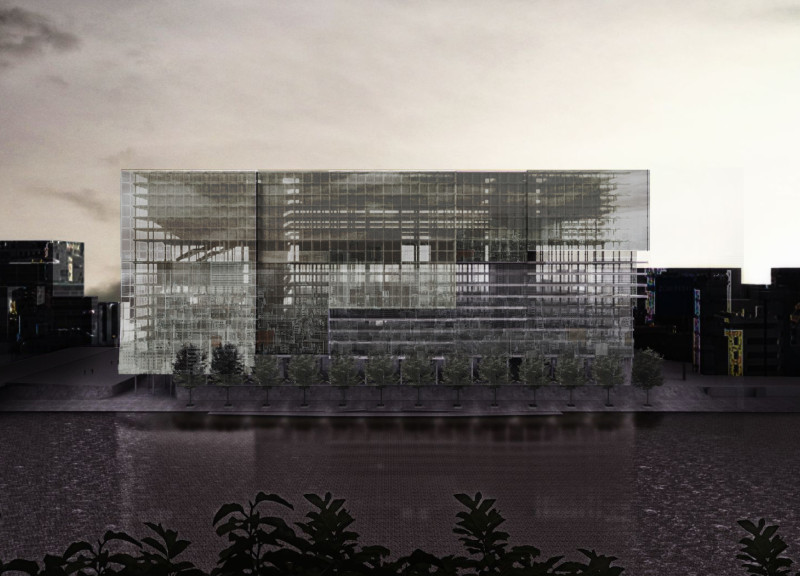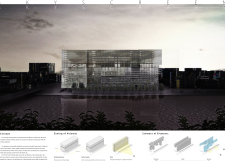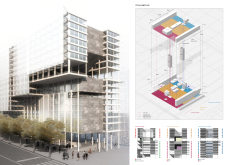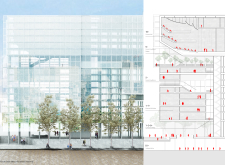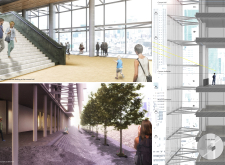5 key facts about this project
The project's zoning strategy efficiently divides the building into distinct horizontal and vertical sections, allowing for a meaningful distribution of uses. This creates a coherent flow from public areas to private ones, with retail spaces occupying the lower levels, ensuring accessibility for pedestrians. Higher floors house cultural institutions such as museums and concert halls, emphasizing the project’s role as a cultural hub.
Architectural Expression of Spaces
SkyScreen employs a range of materials to achieve its design intent. The predominant use of glass creates a transparent façade that allows natural light to illuminate the interior, enhancing the connection between indoor and outdoor environments. Concrete is utilized for structural elements, providing stability and supporting the aesthetic simplicity of the design. Additionally, a steel framework underscores the building’s slender profile while facilitating expansive views of the surrounding cityscape. Wood is selectively employed in interior finishes, adding warmth and contrasting with the predominantly sleek materials.
The project’s unique characteristics include its innovative approach to public spaces. Open plazas at ground level foster social interaction, making the area a vibrant locale within the city. This design choice not only encourages community engagement but also establishes a visual and physical connection to those passing through the vicinity. Moreover, vertical circulation within SkyScreen is thoughtfully designed, using escalators and dedicated service paths to accommodate the various spatial functions without congestion.
Integration of Cultural Facilities
SkyScreen serves as more than a skyscraper; it is a multi-functional space designed to accommodate diverse activities. The incorporation of cultural spaces such as an auditorium and gallery not only enriches the local cultural landscape but also attracts visitors and residents alike. This integrative approach fosters a dynamic and engaging environment where art and commerce coexist. The careful planning of multifunctional spaces ensures seamless transitions between various uses, meeting the needs of different user groups throughout the day.
In summary, SkyScreen represents a thoughtful synthesis of urban architecture and community engagement. Its design addresses the functional demands of a modern city while enhancing the interaction between the built environment and its users. To gain a deeper understanding of the architectural plans, sections, designs, and ideas behind this project, readers are encouraged to explore the details of the SkyScreen presentation.


